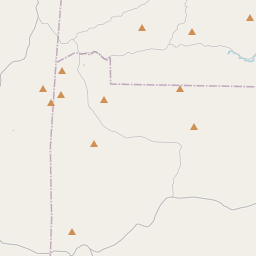McCormack Christian Church







© OpenStreetMap contributors
Daniel McCormack donated land for church, graveyard and school, 1819, to replace log church built by Baptists, circa 1785. Structure was used by several denominations. In 1830 most of original members became affiliated with the Disciples of Christ, founded by Alexander Campbell. Has served continuously as Christian Church since then. Presented by Friends of McCormack Christian Church.
Reverse
McCormack Christian Church - Bricks laid in Flemish bond on stone foundation reflect Campbell's belief in simplicity of design and worship. Galleries for slaves were at each end. Stipulation by McCormack was that church was to be open to all denominations and people. It was listed on National Register of Historic Places, 1976. Presented by Friends of McCormack Christian ChurchMore history nearby
Abraham Lincoln, the 16th President of the United States, was born in Hodgenville, Kentucky, in 1809. His birthplace is now a National Historical Park.
About Lincoln County
Lincoln County Timeline
Lincoln County, Kentucky has a rich and fascinating history that spans centuries. The area that is now Lincoln County was originally settled by Native American tribes, including the Shawnee and Cherokee. European exploration and settlement began in the late 18th century, with pioneers from Virginia and North Carolina making their way westward.
The county was officially established in 1780, making it one of the oldest counties in the state. It was named after Revolutionary War General Benjamin Lincoln. In the early years, Lincoln County was a frontier region, characterized by log cabins, subsistence farming, and frequent conflicts with Native American tribes.
During the 19th century, Lincoln County saw significant growth and development. The construction of turnpikes and railroads connected the county to major cities and markets, stimulating economic growth. Agriculture, particularly tobacco farming, became a vital industry, while the Stanford Female College, founded in 1853, provided education opportunities for women.
The county also played a significant role in the Civil War. Despite its primarily pro-Union sentiment, Lincoln County experienced division and violence during the conflict. The Battle of Stanford occurred in December 1864, where Confederate forces led a raiding party in an attempt to disrupt Union supply lines. Ultimately, the county remained under Union control throughout the war.
In the 20th century, Lincoln County continued to evolve. The decline of tobacco farming led to diversification in agriculture, with corn, soybeans, and cattle becoming important commodities. Manufacturing and industry also emerged, contributing to the county's economic growth. Today, Lincoln County is a mix of rural and urban areas, with a rich history and a thriving community.
The county was officially established in 1780, making it one of the oldest counties in the state. It was named after Revolutionary War General Benjamin Lincoln. In the early years, Lincoln County was a frontier region, characterized by log cabins, subsistence farming, and frequent conflicts with Native American tribes.
During the 19th century, Lincoln County saw significant growth and development. The construction of turnpikes and railroads connected the county to major cities and markets, stimulating economic growth. Agriculture, particularly tobacco farming, became a vital industry, while the Stanford Female College, founded in 1853, provided education opportunities for women.
The county also played a significant role in the Civil War. Despite its primarily pro-Union sentiment, Lincoln County experienced division and violence during the conflict. The Battle of Stanford occurred in December 1864, where Confederate forces led a raiding party in an attempt to disrupt Union supply lines. Ultimately, the county remained under Union control throughout the war.
In the 20th century, Lincoln County continued to evolve. The decline of tobacco farming led to diversification in agriculture, with corn, soybeans, and cattle becoming important commodities. Manufacturing and industry also emerged, contributing to the county's economic growth. Today, Lincoln County is a mix of rural and urban areas, with a rich history and a thriving community.
Lincoln County Timeline
This timeline provides a condensed summary of the historical journey of Lincoln County, Kentucky.
- 1780: Lincoln County is established as one of the original three counties in Kentucky.
- 1785: Stanford becomes the county seat of Lincoln County.
- 1792: Kentucky becomes the 15th state in the United States.
- 1862: During the Civil War, Stanford is occupied by Confederate forces.
- 1864: The Confederate forces retreat from Stanford, and the Union army takes control of the area.
- 1949: Lincoln County High School is established.
- 1958: The construction of Lake Cumberland is completed, partially flooding parts of Lincoln County.
- 1994: Lincoln County celebrates its bicentennial.